LCS Format Changes 2025: Comprehensive Breakdown and Impact
Updated On: October 23, 2025 by Aaron Connolly
Overview of LCS Format Changes in 2025
In 2025, Riot Games is shaking up League of Legends esports in a way that honestly feels overdue. They’re merging three major regions into a single Americas league, which is wild. This move should ramp up the competition by throwing all the best players into the same pool.
They’re also rolling out a three-split format. That means more international opportunities for teams during the year.
Key Reasons Behind the 2025 Overhaul
Riot Games says they want to fix some big problems in League esports. Their main goal? Build a more sustainable ecosystem for teams and players.
They really want to concentrate talent. By merging LCS, CBLoL, and LLA, they’re making sure the best players actually get to play against each other. That should make the games way more interesting.
They’ve noticed that fans struggle to keep up with all the different leagues. By unifying everything, it’s way easier to follow your favorite teams and players.
Financial stuff definitely played a role here. Smaller leagues just couldn’t keep up with prize pools and sponsors. A bigger, combined league can offer more money and attract bigger names.
Riot’s taking cues from their VALORANT Champions Tour. That format showed them that combining regions can work without ruining the competition.
They’re also opening up clearer paths for new talent. Guest spots and tier-2 opportunities mean up-and-coming players have a real shot at making it.
Comparison With Previous Seasons
This 2025 format is a total reset from what we’ve seen in the past.
Before, we had just two splits: Spring and Summer. Teams played round-robins, then the top six hit best-of-five playoffs. Only the best teams from each split made it to international events.
Now, the three-split system changes everything:
| Old Format | New 2025 Format |
|---|---|
| 2 splits per year | 3 splits per year |
| Regional competition only | Inter-regional conferences |
| 2 international events | 3 international events |
| 10 LCS teams | 16 total Americas teams |
Split 1 leads into a new international tournament in March 2025. This event brings in Fearless Draft, where champs picked in earlier games get banned for the rest of the series.
Split 2 is all about MSI. Top teams from each conference make it to the event.
Split 3 wraps up with the Americas Regional Championship. Three teams from here will qualify for Worlds.
The new conference setup is honestly pretty exciting. Six LCS teams will face six CBLoL teams, plus LLA squads, all season long. North American fans finally get to see their teams go up against Brazilian and Latin American rivals on a regular basis.
Guest spots are in the mix too. Teams from tier-2 leagues can fight their way into the top league, adding some real stakes and drama.
Merger Into the Americas League
The biggest twist is that three separate leagues are now one unified system. Teams split into North and South conferences, but they keep their regional identities.
Structure of North and South Conferences
Starting in 2025, the Americas League will have two conferences with eight teams each. The North Conference is mostly old LCS teams. The South Conference brings in organizations from Brazil and Latin America.
Each conference runs its own regular season. Teams mostly play against others in their own group, sticking to the three-split format all year.
Conference Breakdown:
- North Conference: 8 teams (mainly former LCS orgs)
- South Conference: 8 teams (CBLOL and LLA orgs together)
Conferences only clash at big tournaments, like the Americas Regional Championship at the end of the season. This keeps old rivalries alive but mixes in some fresh cross-regional battles.
Both conferences stick to the same schedule. The three-split system replaces the old spring and summer splits, making it easier for fans to keep up.
Integration of LCS, CBLOL, and LLA Teams
The merger cuts down the number of partnered teams. LCS loses two of its current orgs, and CBLOL drops two as well to fit the new structure.
Team Reduction by League:
- LCS: Drops from 10 to 8 teams
- CBLOL: Drops from 10 to 8 teams
- LLA: Keeps a spot in the South Conference
Some LLA teams join the South Conference alongside CBLOL orgs. The exact mix depends on competitive strength and keeping things fair regionally. Teams have to meet new partnership rules for the Americas League.
Guest spots stick around through promotion tournaments. NACL and LRN (tier-two leagues) battle for these chances. Winners can challenge current guest teams to join the conferences.
Each region keeps its own flavor. Teams hold onto their branding and fan bases, but now everyone’s fighting for international spots under the Americas League.
Three-Split Seasonal Structure
Next year, League of Legends is ditching the old two-split setup. Now, we get three splits, and each one actually matters.
The first split feeds into a new international tournament. The second split sends teams to MSI. The third split crowns regional champs.
Purpose and Format of Each Split
Split 1 is all about regional battles in the North and South conferences. Teams mostly face off against others in their own group. At the end, the conference champs clash to see who represents the Americas at the new March international event.
Split 2 is for MSI qualification. Both conference champs get automatic spots at Mid-Season Invitational, which now happens in early July. This split is also about building team chemistry and giving fans more time to get attached to players.
Split 3 is the Regional Championship. Teams fight for the season-long title in their region. Conference winners grab Worlds spots, while extra teams from both conferences compete for any remaining Worlds berths.
Now, teams have clear goals all year. The old system sometimes felt like you were just grinding through the same matches.
Schedule and Timing Adjustments
The new format really shakes up the competitive calendar. Split 1 starts right away in the year and runs through February, then leads straight into the March international event. That’s a big shift from the old, later starts.
MSI moves to early July after Split 2 wraps up. This gives teams more time to prep and puts more space between international tournaments.
Split 3 stretches the season out, with Regional Championships deciding who goes to Worlds. Pro players now compete for about nine months instead of cramming everything into a short window.
These changes should keep fans interested all year, and every match actually counts for something.
Introduction of the Fearless Draft
The Fearless Draft is honestly the wildest change to competitive play since Riot expanded ban phases. When a champion gets picked in an early game, both teams lose access to it for the rest of the series. Suddenly, you need a deep champion pool just to survive.
How the Fearless Draft Works
Fearless Draft keeps the normal pick and ban system but adds a twist. Once a champ gets picked in game one, neither team can pick it again during that series.
Here’s how it goes:
- Game 1: Everything’s on the table
- Game 2: All champs from game 1 are now banned for both teams
- Game 3: Champs from games 1 and 2 are off-limits
- And so on for the rest of the series
If Team A grabs Azir in game one, Team B can’t pick Azir later either.
Riot has already tested this in some regional leagues before bringing it to the big stage. Now, leagues like LCS, LCK, and LPL will use Fearless Draft for all Riot-run tournaments.
Teams have to prep around 20-30 champs per role now, instead of just focusing on a handful of meta picks. That should make for way more interesting games.
Impacts on Team Strategies and Meta
Teams need players who can handle a bunch of champions at a high level. If someone only plays a couple champs, they’re going to get exposed in long series.
Strategic changes popping up:
- Draft priority matters: Teams have to decide whether to pick strong champs early or save them for later games
- Role flexibility: Players need backup picks that work in different comps
- Meta diversity: We’ll see oddball champs show up just because teams run out of options
Coaches have their work cut out for them. They need to plan for deep champ pools and think about draft strategies for an entire series, not just one game.
This really hits best-of-five matches. By games four and five, you could see 40+ champs banned, which gets pretty nuts.
CBLOL and other leagues that tried Fearless Draft saw viewership go up. Fans seem to love seeing new champs and less predictable drafts.
Teams with solid academy systems have an edge. Substitutes who bring different champ pools can bail out main roster players when they run out of comfort picks.
New International Tournament Structure
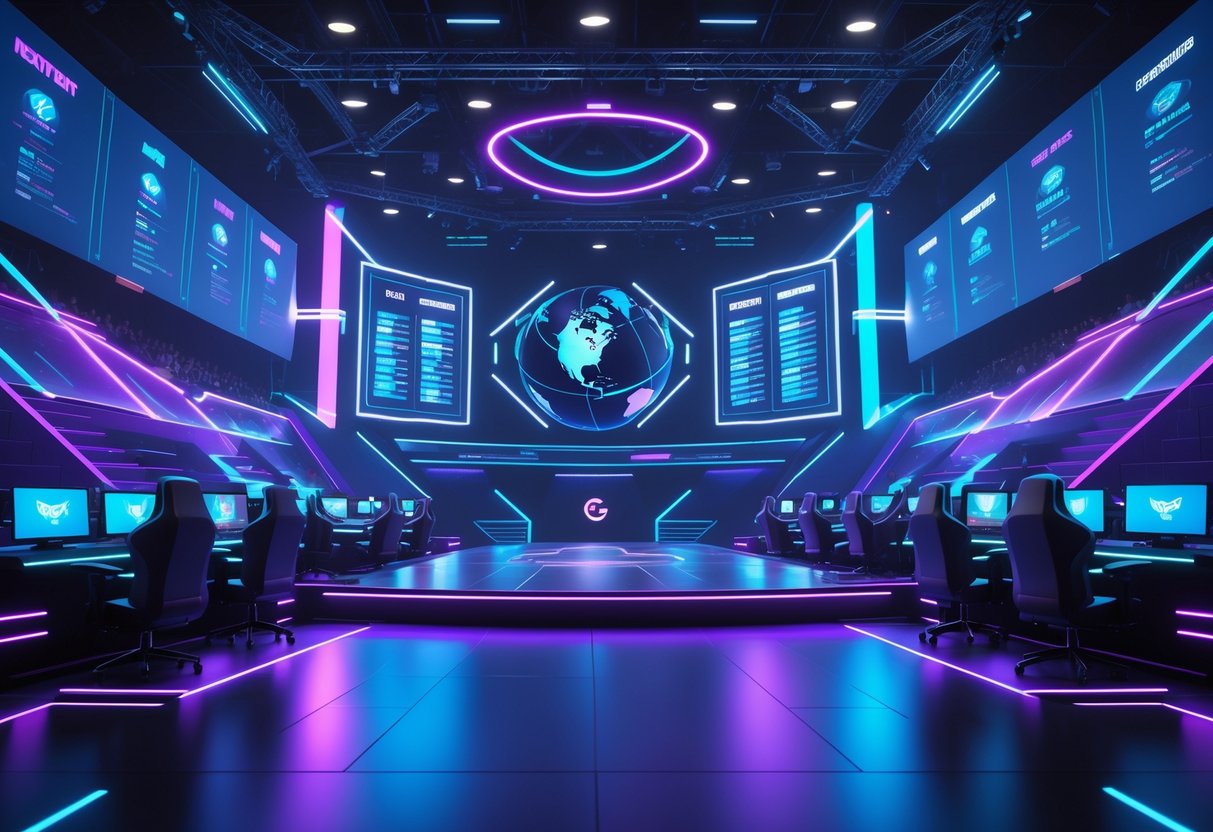
The 2025 season adds a third big international tournament alongside MSI and Worlds. Now, teams get a more connected calendar and another shot at global competition.
Overview of the Third Global Event
This new tournament kicks off in March with a six-day international round. Five teams show up—one from each major region, including the Americas.
The event splits into two parts. First, teams play group-stage round robins. Then, the top four advance to knockout brackets.
Key tournament features:
- Timeline: January-March regional play, March international finals
- Duration: Six days of international games
- Format: Round-robin groups, then 4-team brackets
- Innovation: Riot tries new formats every year
Riot wants to keep things fresh, so expect new wrinkles every year. In 2025, they’re starting with Fearless Draft in best-of series.
This event replaces the old spring split. Now, regional games feed right into international play, so even early-season matches matter.
Qualification Pathways for Teams
Each of the five big regions gets one slot in this new event. The Americas league picks its rep through a playoff between the North and South conference champs.
Regional allocation:
- China: 1 team
- Korea: 1 team
- EMEA: 1 team
- Americas: 1 team (winner of North vs South)
- Asia Pacific: 1 team
This tournament ties into the rest of the 2025 schedule. Teams can use it to build momentum for MSI in July and, hopefully, for Worlds later on.
Regional split 1 doubles as a qualifying tournament. So, teams have to fight for both domestic bragging rights and a spot on the international stage at the same time.
The winner doesn’t get an extra Worlds slot like MSI champs do. But the event gives teams valuable international experience and points for the year-end championships.
Americas Regional Championship
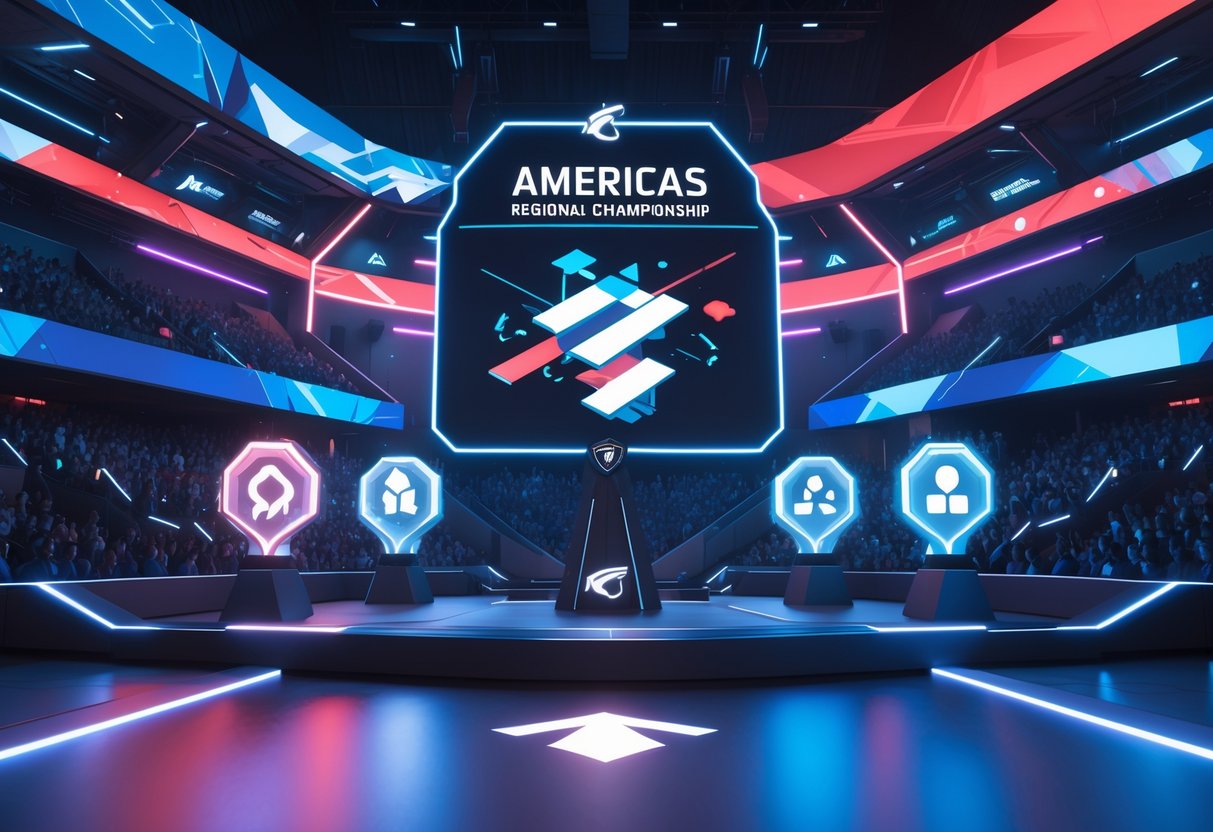
The Americas Regional Championship stands as the last big test where teams fight for a shot at Worlds 2025. Six squads from both Americas League conferences go head-to-head in a double elimination bracket, all hoping to represent their region on the world stage.
Final Split and Worlds Qualification
This championship brings together the top three teams from each conference. They clash in a best-of-five double elimination format, and only a few will walk away with a coveted spot at Worlds 2025.
Teams get more than one chance to prove themselves. If a team drops their first match, they still have a shot to run through the lower bracket and keep their dream alive.
Three teams make it to Worlds 2025 from this event. The champion grabs the first seed, while the other two spots go to the survivors of the double elimination grind.
Pressure runs high here—every match could be the difference between making Worlds or going home. One rough series, and a team’s season can end in a flash.
Cross-Conference Playoffs
For the first time, teams from both Americas League conferences finally meet in direct competition. North American and LATAM squads, who spent the season battling in their own regions, now collide.
These cross-conference matches usually bring some wild upsets. Regional playstyles don’t always match up, and teams have to adapt fast or get left behind.
The format keeps things fair—each conference sends three teams, so every region gets a shot, no matter what the power rankings say.
Teams can’t just stick to their old strategies when they face new opponents. Coaches have to dig deep, scouting different metas and champion preferences from across the continent.
This mixing of talent and styles leads to some of the most entertaining League of Legends matches all year. Fans get a sneak peek at how their favorite teams measure up before Worlds even starts.
Tier 2 Ecosystem and Promotion System Enhancements

Tier 2 changes now group NACL, CBLOL Academy, and Latin leagues into one system, complete with new promotion tournaments. Guest team slots open up direct paths from amateur to pro through competitive relegation.
Role of NACL, CBLOL Academy, and Latin Leagues
The tier 2 ecosystem merges three different regional circuits into a single Americas framework. NACL (North American Challengers League) keeps its development focus for LCS conference teams. CBLOL Academy sticks with its Brazilian roots, supporting CBLOL squads.
Latin American leagues see the biggest shakeup. With LLA scaling back to just team representatives, former LLA teams now fight it out in this revamped tier 2. The result? A tougher environment, but Latin players still have a shot at tier 1 through promotion.
All three leagues now run the Full Fearless format. Teams can’t pick the same champions in a series, which most folks agree keeps matches fresh and unpredictable.
Sister teams and college programs will join this system later. These additions should give clearer paths for university players and academy squads to move up.
Guest Team Slot System
Each Americas conference holds one guest team slot for promotion and relegation. These slots rotate between conferences, depending on promotion tournament outcomes. Guest teams earn their way in through tier 2, not by buying permanent spots.
This promotion system rewards performance. Teams have to show up during the regular season and then deliver in promotion tournaments. No more closed doors—if you’re good enough, you can make it.
Relegation works both ways—if a guest team underperforms, they drop back down, while conference partners keep their spots. This keeps established orgs safe but gives new talent a real chance to break through.
Promotion tournaments will probably happen between splits, though the schedule isn’t set in stone yet. Teams should expect several chances each year to grab a guest slot.
Changes to Regional Leagues Worldwide
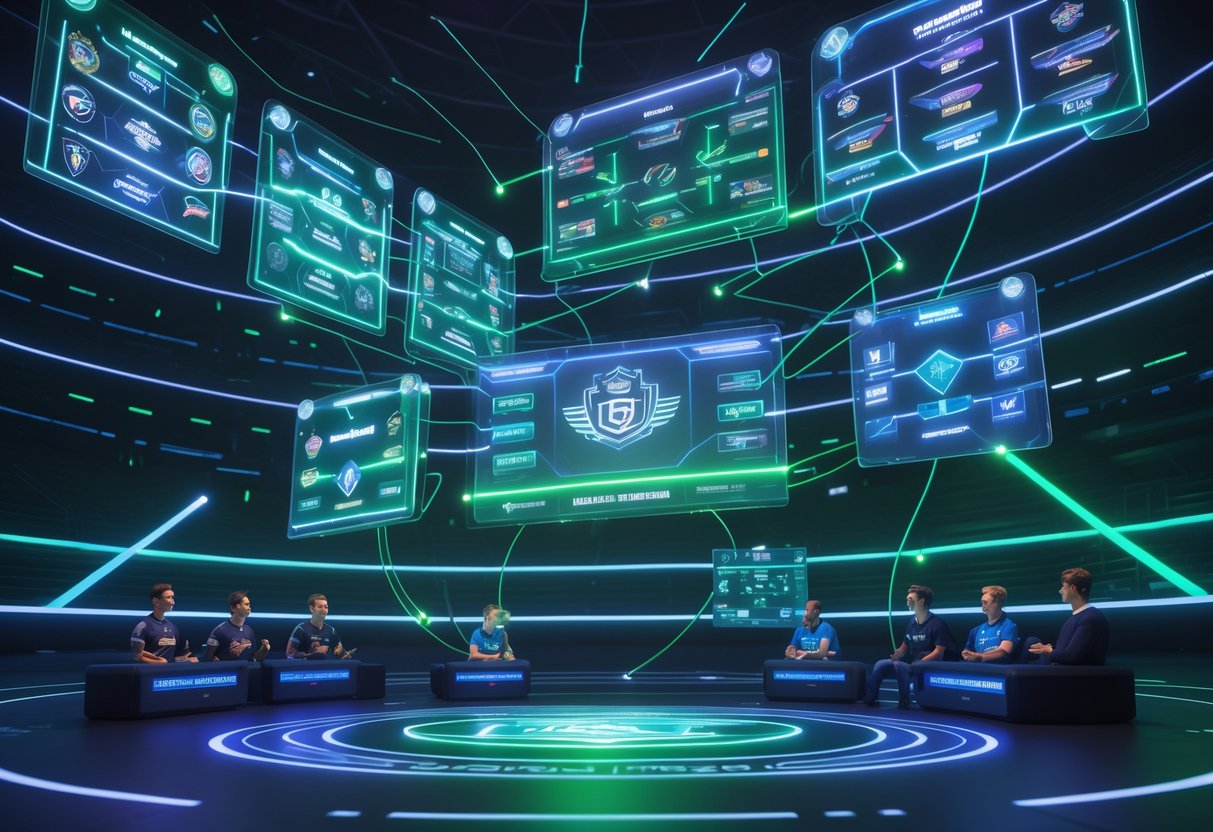
The 2025 overhaul isn’t just for the Americas. Riot’s got big plans for Asia-Pacific too. The APAC league is getting a major makeover, and leagues like PCS and VCS will see their competitive routes change.
Reorganisation of APAC League
Asia-Pacific will see a big shift in 2025 as Riot pushes for global consistency. The APAC league will combine several smaller regional tournaments into a single, unified structure.
Key Changes:
- Multiple regional leagues merge into streamlined conferences
- Three-split format to match the rest of the world
- More cross-regional matches
The LJL keeps its own flavor within this new setup. Japanese teams stay in their own conference but still get to play in bigger APAC events. Local rivalries stay alive, but teams also get more international exposure.
Prize pools and tournament setups get a refresh. The new championship format brings more LAN events during the year. Teams from different APAC regions will meet twice a year for major showdowns.
Tier 2 Development:
- Better pathways for up-and-coming talent
- Standard promotion tournaments across APAC
- More support for broadcasts and fan interaction
Implications for PCS and VCS
Pacific Championship Series and Vietnam Championship Series both undergo big changes. They’re joining the APAC structure but still keep their own identities.
PCS teams now play in a North APAC conference. The old spring and summer splits are gone—now it’s three splits a year. Vietnamese VCS teams join a Southeast Asia group in the same system.
Competitive Impact:
- More international matches between PCS and VCS
- New ways to qualify for global tournaments
- Prize money spread across more events
The new championship system gives PCS and VCS teams more shots at making it to big events. Instead of just a few slots, teams can qualify through multiple tournaments each year.
Both regions get a boost from infrastructure investment. Riot’s putting more into broadcasts and venues, which should help keep fans engaged locally and grow the audience regionally.
Promotion and relegation now feel more dynamic. Teams can earn their way up by performing well over several splits, not just in a single elimination bracket.
Effects on Global Competitive Balance

The Americas League merger is about to shake up the international scene. We’ve seen it happen in other esports—when regions combine, the level of play jumps, and international results get better.
Concentration of Talent in Top Regions
The new Americas League pulls together the top talent from North America, Brazil, and Latin America. Expect tougher matches all season long.
Players who once dominated smaller regions now have to face stronger opponents every week. Brazilian CBLOL stars will get to battle former LCS champs regularly. This constant challenge should produce stronger teams for international events.
The three-split format ramps up the stakes:
- Split 1: Teams debut with Fearless Draft
- Split 2: Standard format for refining strategies
- Split 3: Intense matches for Worlds spots
Twice a year, cross-conference LAN events force the best North and South teams to test themselves against each other for international seeding.
Other esports have shown this works. When you combine the best, the region usually levels up in a year or two.
Implications for EMEA, LCK, and LPL
The LEC now has to deal with a unified Americas region that boasts deeper talent and tougher regular seasons. European teams have already had a hard time against Korea and China, and now the Americas might be knocking on that door too.
LCK teams in Korea could see this as a good thing. They’ve dominated for years, but stiffer competition might push them to innovate even more. The LCK’s careful, methodical playstyle will get tested by Americas teams running Fearless Draft all year.
LPL in China still sits at the top with 17 teams, but now a stronger Americas League could finally give them a real challenger at MSI and Worlds.
Biggest challenges for top regions:
- Americas teams will bring more flexible strategies to international events
- Fearless Draft experience could give them an edge in best-of-fives
- Combining fanbases means more financial muscle for Americas orgs
These shifts might force LEC, LCK, and LPL to rethink their own league structures to keep up.
Fan Experience and Stakeholder Impact
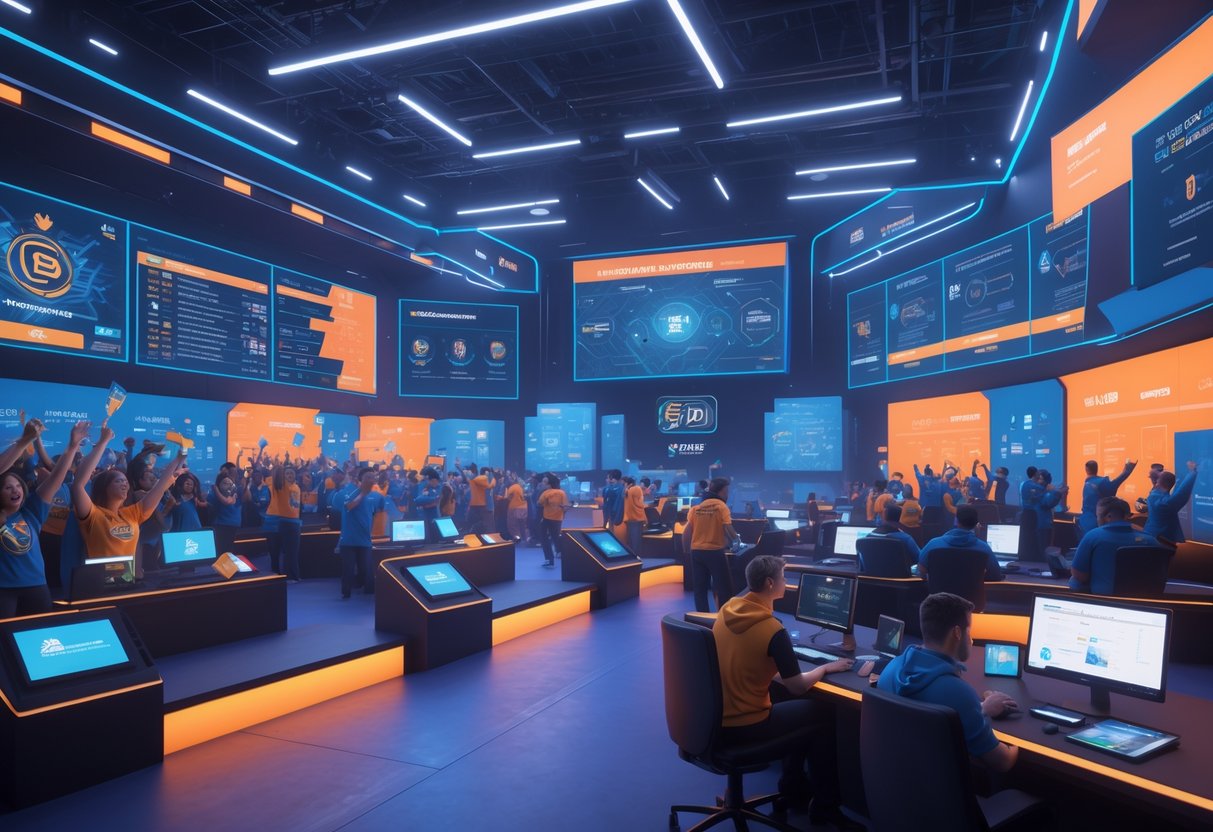
The Americas League overhaul brings some real changes for fans and teams. Tournament formats get a boost, and cross-conference events shake things up. For teams and orgs, the three-split system and promotion structure come with new challenges.
Fan Engagement and Accessibility
The new Americas League format gives fans a better show. Split 1 uses the Fearless Draft, so teams can’t spam the same champs.
This means more variety and some wild team comps you might not expect.
Split 2 brings back the classic gameplay for those who like the tried-and-true. Split 3 cranks up the tension with matches that decide Worlds spots.
Cross-conference LANs happen twice a year. North and South conference teams finally meet to decide who gets the best seeds internationally.
Three splits mean more games and more storylines all year. Instead of two chunks, fans get a steady stream of League action.
Riot Games now includes CBLOL and LLA with LCS, so fans can follow more teams and discover new favorites from other regions.
Sustainability for Teams and Orgs
Teams now have to juggle three splits, not just two. That means more prep, more coaching, and higher player costs.
Promotion tournaments add a layer of risk for orgs. Teams at the bottom could lose their Tier 1 spots to hungry challengers from NACL, CBLOL Academy, LRN, or LRS.
Still, the expanded format brings more chances for sponsorships. More splits equal more airtime and more ways to keep fans (and sponsors) invested.
Tier 2 orgs finally get a clearer path to the big leagues. The four-league system (NACL, CBLOL Academy, LRN, LRS) sets up a real ladder for advancement.
Heads up: Teams need to plan for bigger budgets to handle longer seasons.
Organisations also benefit from the Full Fearless format in every Tier 2 league. This helps develop players who can jump straight into the top level without missing a beat.
The system supports regional talent development, giving local orgs more valuable players to build around or transfer.
Comparisons With VALORANT and Esports Innovation
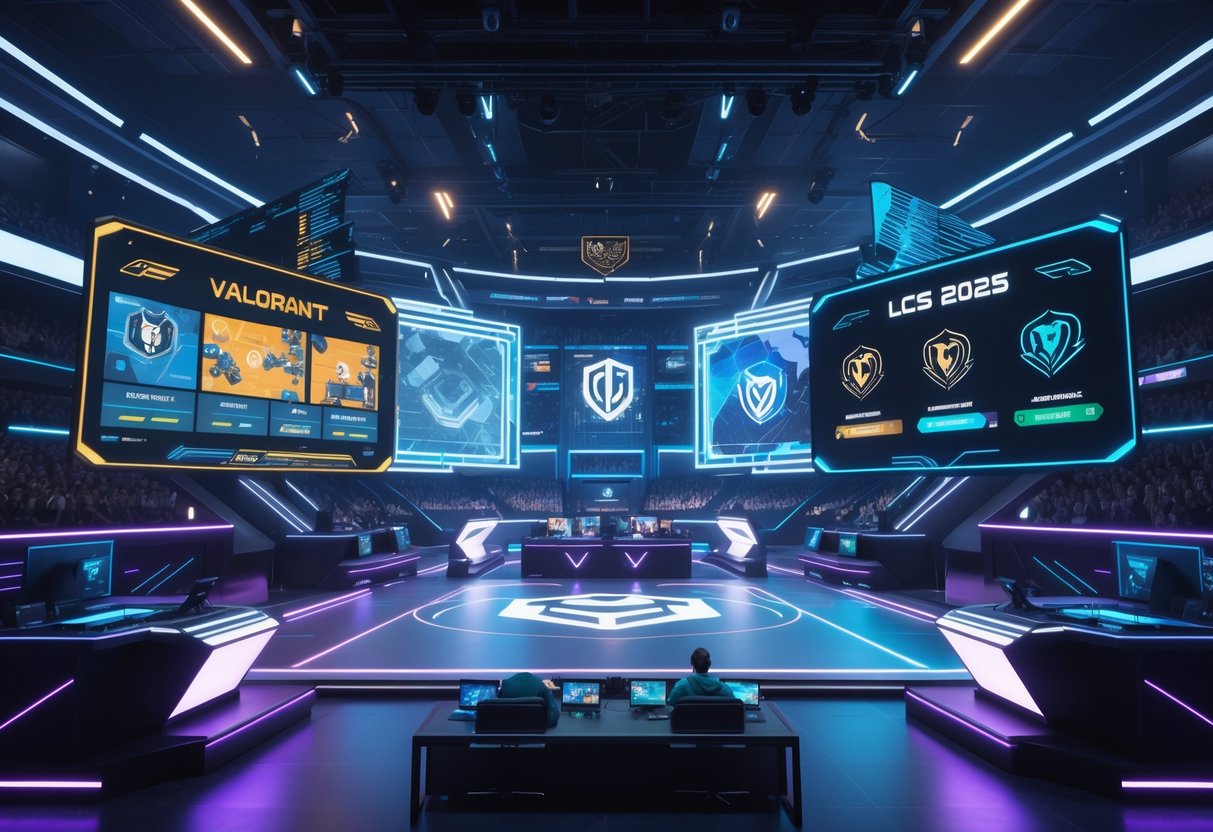
Riot Games is clearly taking notes from VALORANT’s format to reinvent League of Legends esports. Borrowing ideas across games shows how multi-regional leagues and streamlined tournaments can boost both viewership and financial health.
Multi-Regional League Structures
VALORANT’s Champions Tour set the trend for multi-regional leagues. The VALORANT format merged North America, Brazil, and Latin America into one Americas league before League made the leap.
Key similarities:
- Conference setup: Both games split the Americas into North and South
- Cross-regional play: Teams start in their own conference, then face off against the other side
- International spots: Top conference teams qualify for global events
VALORANT proved fans love inter-regional battles. Viewership jumped during cross-conference matches—people wanted those fresh rivalries.
League’s 2025 format copies this playbook. North America’s LCS teams join the North conference, while Brazil’s CBLOL teams anchor the South.
This approach fixes a big issue with old regional leagues. Fans got bored watching the same matchups over and over in one region.
Adoption of Event Formats Across Titles
Riot Games is moving to standardize tournament structures for both League of Legends and VALORANT. Now, the three-split format applies to both, which should make things easier to follow if you’re a fan of multiple games.
Shared format elements:
| Feature | VALORANT | League 2025 |
|---|---|---|
| Split structure | 3 splits per year | 3 splits per year |
| Regional championships | Americas, EMEA, Pacific | Americas, LEC, LCK, LPL, APAC |
| Guest team slots | Promotion/relegation | Tier-2 system integration |
Both games run from January to October, ditching the old schedules. This shorter off-season keeps fans plugged in almost all year.
League’s qualification methods now take cues from VALORANT’s Championship Points system. Teams rack up points over the splits, and that determines how they’re seeded for international tournaments.
Since the global schedule is synchronized, the games don’t overlap as much. Fans can follow both without having to pick one over the other.
Honestly, this approach shows Riot wants to treat esports as a connected experience, not just a bunch of separate competitions.
Frequently Asked Questions

The LCS 2025 season is shaking things up with the new Americas League format, fewer partnered teams, and a total revamp of the split system. These changes will affect everything—from team rosters to how and when you can watch matches across North and South America.
What adjustments has the LCS made to its format for the 2025 season?
For 2025, the LCS is rolling out the Americas League system. North and South American teams now compete in a unified league.
The format cuts the number of partnered teams in each region. Both LCS and CBLOL lose two partnered teams.
Teams are split into North and South conferences. This setup looks a lot like traditional sports leagues with regional divisions.
Every region follows the same split format now. Competition timing and structure are standardized worldwide.
Teams that lose partnership still get a shot in Tier 2 tournaments. That gives organizations another way to stay involved, even if they lose partnership status.
How can I find the schedule for the LCS 2025 season?
You’ll find official LCS schedules on the League of Legends Esports website. Honestly, it’s worth bookmarking.
The Riot Games calendar lists all match dates and times. You can sync it to your phone if you want.
Most games stream live on Twitch and YouTube. Both platforms keep an updated list of upcoming esports matches.
Sites like Leaguepedia also keep detailed timetables. They often include extra info like brackets and results.
What new teams are competing in the LCS in 2025?
There will be fewer teams in 2025 because of the partnership cuts. We haven’t seen official announcements for new organizations yet.
Teams have to qualify through the Americas League structure. That changes things for both current partners and any hopeful newcomers.
Brazilian teams now get guaranteed spots at international events. This changes how regional slots are handed out.
Expect roster news closer to the season kickoff. Keep an eye on League of Legends Esports social accounts for the latest.
Where can I purchase tickets to watch the LCS 2025 matches?
LCS Studio tickets usually go up for sale on Ticketmaster or Universe. Riot Games uses these for most of their live events.
Season tickets tend to drop two or three months before splits start. If you want early access, sign up for the LCS newsletter.
Individual match tickets come out closer to each event. Weekend games sell out faster than weekday ones, most of the time.
Playoff and finals tickets cost more than regular games. Prices range from £25 to £150 depending on where you sit and how big the event is.
How does the LCS winter split influence the overall 2025 standings?
The new split system changes how championship points get distributed. Winter split results directly shape playoff seeding.
Teams earn points in every split. A strong winter gives them a leg up for the rest of the year.
International event qualification now depends on combined seasonal performance. Winter split matters for both MSI and Worlds spots.
The Americas League structure ties winter standings to cross-regional playoffs. Both North and South conference results carry equal weight.
Which resources offer comprehensive coverage and analysis of the LCS 2025 season?
You can find match results and stats right on the official LoL Esports website. They show player performance and team standings, which is super handy.
Journalists at ESPN Esports and Dot Esports dive into strategy and roster changes. Their articles often highlight key moments and shifts that fans might otherwise miss.
Popular streamers and ex-pros jump in with content about format changes. They’ll share insider takes and sometimes even spill a bit of behind-the-scenes info.
Reddit’s r/lolesports community loves to discuss matches and predictions. Honestly, they sometimes spot trends before anyone else does.


